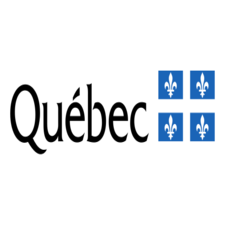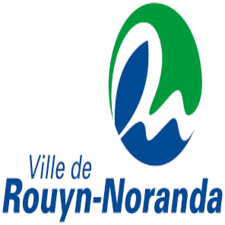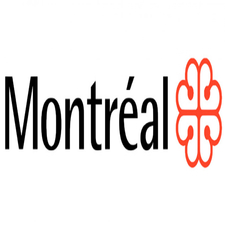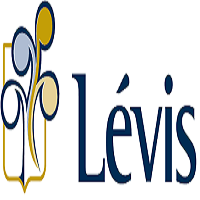Relief
Type of resources
Available actions
Topics
Keywords
Contact for the resource
Provided by
Formats
Representation types
Update frequencies
status
-

This hypsometric layer represents the relief of Quebec territory at a scale of 1/20,000. Level curves are taken from ** [topographic maps on a scale of 1/20,000] (https://www.donneesquebec.ca/recherche/fr/dataset/cartes-topographiques-a-l-echelle-de-1-20-000) **. They are generally at an equidistance of ten meters and, in some cases, they can vary between eight and twenty meters. This data layer includes contour lines and dimensional points as points and text. Each file covers an area of approximately 250 km2. The web service is produced using topographic data at a scale of 1/20,000 in the south and map data from Natural Resources Canada (CanVec product) at a scale of 1/50,000 in the north.**This third party metadata element was translated using an automated translation tool (Amazon Translate).**
-

This map illustrates the terrestrial and marine reliefs of Quebec and surrounding territories, at a scale of 1/2,000,000. Color ranges representing altitude classes and blending offer a summary of the relief and the major physiographic groups of Quebec. This map of the relief of Quebec is available in two versions: * The general map, which illustrates the relief and the borders (GeoTIFF version only); * The toponymic map, which illustrates the relief, some toponyms and borders (GeoTIFF and PDF versions). **This third party metadata element was translated using an automated translation tool (Amazon Translate).**
-

The level curves are derived from a LiDAR survey carried out in May 2014. The equidistance is 25 cm, the absolute planimetric accuracy (XY) is of approximately 40 cm and the absolute altimeter accuracy (Z) is approximately 20 cm. The urban sectors covered are the urban perimeters of Rouyn, Noranda, Granada, Évain (partially), Lac-Dufault and the airport. **This third party metadata element was translated using an automated translation tool (Amazon Translate).**
-

The Atlas of Canada's Relief Map shows Canada's relief with a colour ramp of elevation ranges. Colour tints of depth ranges show ocean bathymetry. This map shows the relief of Canada using three different resolutions. Starting with low resolution, as you zoom in, it transitions to medium and then high resolution. The low resolution is derived from the merging of Natural Resources Canada (NRCan) High Resolution Digital Elevation Model (HRDEM) from 2021 and the legacy Canadian Digital Elevation Model (CDEM), 1945-2011, resampled to 804 metres. The medium resolution is the NRCan, Medium Resolution Digital Elevation Model (MRDEM) from 2024, with modifications by the Atlas of Canada for cartographic purposes. The high resolution is NRCan's 2021 HRDEM product with 1 metre pixels. Also included, is a bathymetric layer from GEBCO 2021 (https://download.gebco.net/) resampled to 804 metre pixels. Other sources: Danish Ministry of Climate, Energy and Utilities; Geological Survey of Denmark and Greenland (GEUS) 2021; Government of Iceland; United States. National Geodetic Survey’s Integrated Database, 2021 (https://geodesy.noaa.gov/) All layers have been symbolized to match the Atlas of Canada Relief wall map. Copies of this map may be obtained from authorized map dealers in Canada, USA and abroad. For further information on purchasing the paper map MCR 0101 or downloading the digital version free of charge, go to atlas.gc.ca. Produced by the Canada Centre for Mapping and Earth Observation, Natural Resources Canada. Printed in 2025. ISBN 978-0-660-37948-7 Catalogue No. m57-1/46-2021e Permanent link: https://doi.org/10.4095/pe5mnk08hr Further information on all these maps can be found on the Atlas of Canada web site atlas.gc.ca.
-

An accurate representation of the relief is essential for a large number of land management applications. Digital terrain models (DTM) and digital surface models (MNS) are simplified representations of ground altimetry. The MNT is a representation of the altitude of “bare ground” without infrastructure, while the MNS reproduces the shape of the Earth's surface by including all the permanent and visible elements of the landscape such as the ground and buildings. It is possible to add vegetation by including the [Numerical Canopy Model (MNC)] (/city-of-montreal/model-numerique-de-canopee-mnc).**This third party metadata element was translated using an automated translation tool (Amazon Translate).**
-

**Note that topographic maps at a scale of 1/100,000 are no longer updated. For the latest update date, see the [metadata] (ftp://transfert.mern.gouv.qc.ca/public/diffusion/RGQ/Documentation/BDAT/Metadonnees_BDAT100k_NordSud.xls). The reference map data is now constituted using a continuous information layer approach: ** * [AQNetwork+] (https://www.donneesquebec.ca/recherche/fr/dataset/adresses-quebec) * [Quebec Hydrographic Network Geobase (GRHQ)] (https://www.donneesquebec.ca/recherche/dataset/grhq) * [Administrative divisions on a scale of 1/20,000 (SDA)] (https://www.donneesquebec.ca/recherche/fr/dataset/decoupages-administratifs) * [Regional Coherent Hydro Digital Terrain Models (RTM)] (https://www.donneesquebec.ca/recherche/fr/dataset/modeles-numerique-de-terrain-hydro-coherents-a-l-echelle-regionale) ___ Topographic maps at a scale of 1/100,000 offer an overview of the occupation of Quebec territory at a scale of 1/100,000. A series in the south (266 sheets) and a series in the north (151 sheets) of the 53rd parallel cover the majority of Quebec. The data is less than 10 meters accurate and each file covers an area of approximately 4,000 km2, equivalent to 16 sheets at [a scale of 1/20,000] (https://www.donneesquebec.ca/recherche/fr/dataset/cartes-topographiques-a-l-echelle-de-1-20-000 “Topographic maps at a scale of 1/20,000”). Main components: * Hydrography (lakes of more than three hectares, permanent watercourses, swamps, etc.). * Vegetation (wooded areas and peatlands of more than 13 hectares). * The constructions of man: * transport infrastructures (passable roads, bridges, airports, etc.); * buildings larger than 12,500 m2; * equipment and designated areas. * The relief (level curves at an equidistance of 20 meters and elevation points). ##### Special features of the series south of the 53rd parallel * The data is obtained by generalizing map data at a scale of 1/20,000. Between the 51st and 53rd parallel, they are extracted from SPOT satellite imagery at 10 meters of resolution. * The data formats available for this series are: * ArcInfo cover (vector); * GeoTIFF, CCL projection (matrix); * GeoTIFF, MTM projection (matrix); * PDF (matrix). ##### Special features of the series north of the 53rd parallel * The data is obtained by generalizing cartographic data from Natural Resources Canada (CanVec product) at a scale of 1:50,000. Multi-source data, namely data from Adresses Québec, data on airports and hydrobases from the Ministère des Transports du Québec, and data on reservoirs from Hydro-Québec, increase the quality of this cartographic product on a scale of 1/100,000. * The data format available for this series is: * FGDB (vector).**This third party metadata element was translated using an automated translation tool (Amazon Translate).**
-

__The link: *Access the data directory* is available in the section*Dataset Description Sheets; Additional Information*__. The polygonal layer of lidar slope classes expresses the slope of the terrain. The slopes are generated from a digital terrain model (DTM) with a resolution of 10 meters. The latter is the result of an aggregation by bilinear interpolation of lidar NCDs at 1 m. The minimum area of the resulting polygons is 0.2 hectares. Lidar digital slopes are divided into 7 classes. + A - Null by [0 to 3]% + B - Low from] 3 to 8]% + C - Soft from] 8 to 15]% + D - Moderate [from] 15 to 30]% + E - Strong from] 30 to 40]% + F - Steep from] 40 to ∞ [% + S — Summit completely surrounded by F slopes This map covers the entire territory of the Southern Quebec Ecoforest Inventory (IEQM) and was developed in order to provide stakeholders with the tools they need when applying for financial assistance from the Forest Management Investment Program (PIAF). __We do not recommend using the information in this layer for detailed analysis. __**This third party metadata element was translated using an automated translation tool (Amazon Translate).**
-

Level curves on the territory of Lévis. The equidistance is 50 cm, produced from a LiDAR survey carried out in May 2017.**This third party metadata element was translated using an automated translation tool (Amazon Translate).**
-

Digital terrain models offer a representation of the relief south of the 52nd parallel, in the form of an elevation matrix. This matrix makes it possible to visualize the territory in perspective and to perform three-dimensional spatial analyses, using appropriate software. A module specialized in three-dimensional data processing, such as 3D Analyst or Spatial Analyst, is required to visualize the digital altitude model in three dimensions. This digital altitude model (10-meter pixel matrix) is obtained by processing altimeter data (level curves and elevation points) from ** [topographic databases on a scale of 1/20,000] (https://www.donneesquebec.ca/recherche/fr/dataset/cartes-topographiques-a-l-echelle-de-1-20-000) **.**This third party metadata element was translated using an automated translation tool (Amazon Translate).**
-

**Note that topographic maps at a scale of 1/20,000 are no longer updated. For the latest update date, see the [metadata] (ftp://transfert.mern.gouv.qc.ca/public/diffusion/RGQ/Documentation/BDTQ/Metadonnees_Topo-20K.xls). The reference cartographic data is now constituted according to a continuous information layer approach: ** * [AQNetwork+] (https://www.donneesquebec.ca/recherche/fr/dataset/adresses-quebec) * [Quebec Hydrographic Network Geobase (GRHQ)] (https://www.donneesquebec.ca/recherche/dataset/grhq) * [Administrative divisions on a scale of 1/20,000 (SDA)] (https://www.donneesquebec.ca/recherche/fr/dataset/decoupages-administratifs) * [Regional Coherent Hydro Digital Terrain Models (RTM)] (https://www.donneesquebec.ca/recherche/fr/dataset/modeles-numerique-de-terrain-hydro-coherents-a-l-echelle-regionale) *** Topographic maps at a scale of 1/20,000 are the official cartographic base of the Government of Quebec. They cover almost all of the territory south of the 52nd parallel. The data is extracted from aerial photographs at a scale of 1:40,000 taken at an altitude of 6,300 meters. They offer an accuracy of approximately four meters in planimetry. In hypsometry, it is about two meters for dimensional points and about five meters for level curves. Each file covers an area of approximately 250 km2. The main components are: * Hydrography (lakes, rivers, streams, swamps, etc.). * Vegetation (forests, peatlands, nurseries, orchards, etc.). * The constructions of man: * transport infrastructure (roads, bridges, airports, etc.); * buildings (mobile homes, silos, greenhouses, etc.); * equipment (docks, electrical power transmission lines, surface tanks, etc.); * designated areas (golf courses, loan benches, etc.). * The relief (the level curves are generally at an equidistance of ten meters and, in some cases, they can vary between eight and twenty meters).**This third party metadata element was translated using an automated translation tool (Amazon Translate).**
 Arctic SDI catalogue
Arctic SDI catalogue